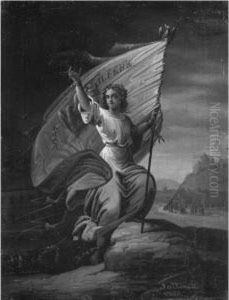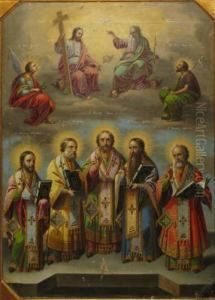Gheorge Tattarescu Paintings
Gheorghe Tattarescu was a Romanian painter, one of the most important figures of Romanian neoclassicism, and a pioneer of art in his country during the 19th century. Born on October 19, 1818, in Focșani, Romania, Tattarescu came from a family that was not particularly well-off or connected to the arts. Nevertheless, Tattarescu's artistic talents became evident early on, and he pursued his passion for art through diligent study and practice.
Tattarescu's initial training in art began in Bucharest under the guidance of Anton Chladek, and his skills were further honed through his studies at the Accademia di San Luca in Rome, Italy, which he attended from 1837 to 1844. This period was crucial in shaping his artistic style, as he was heavily influenced by the neoclassical and Renaissance traditions prevalent in Rome. During his time in Italy, Tattarescu absorbed the techniques and sensibilities of the Italian masters, which he would later adapt and apply to Romanian subjects.
Upon his return to Romania, Tattarescu became a central figure in the cultural life of the country. He opened one of the first painting studios in Bucharest, which became a hub for young Romanian artists. Through his studio, he played a significant role in the development of Romanian art education. Tattarescu was also a founding member of the Romanian Academy and contributed significantly to the cultural institutions of his time.
Throughout his career, Tattarescu was known for his portraits, historical scenes, and religious paintings. His works often depicted Romanian historical figures and events, contributing to the construction of a national identity through art. Some of his most famous works include 'The Revolution of 1848 in Wallachia,' 'Mihai the Brave at Călugăreni,' and 'The Union of the Principalities.' These paintings not only showcased his artistic ability but also served as visual narratives that helped define Romania's past.
Gheorghe Tattarescu remained an active artist until his death on October 21, 1894, in Bucharest. His legacy is preserved in the collections of the National Museum of Art of Romania, as well as in the Gheorghe Tattarescu Memorial Museum, which was established in his former studio. His contributions to Romanian art and culture have made him a respected and celebrated figure in the history of Romania.

